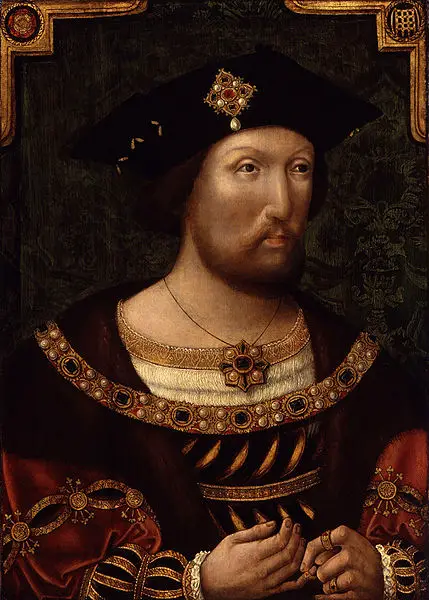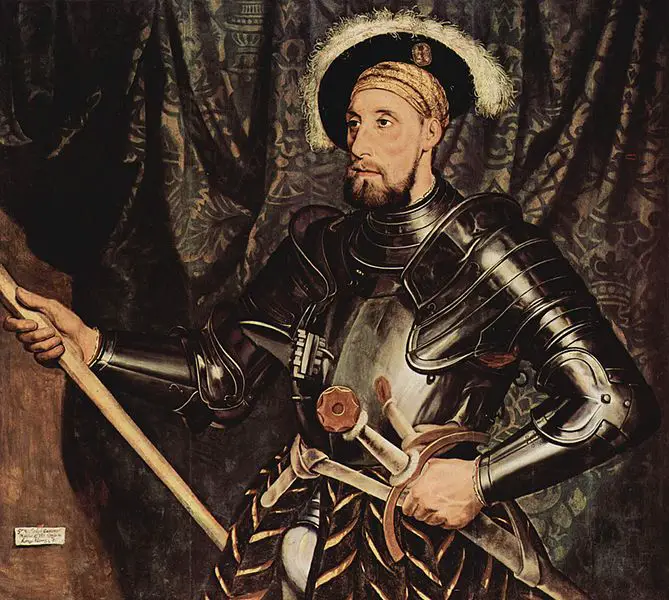On this day in history, 9th March 1566, a pregnant Mary, Queen of Scots witnessed the murder of her private secretary, David Rizzio. He was stabbed fifty-six times and one of the gang responsible was her own husband, Henry Stuart, Lord Darnley.
What happened? Why was Rizzio murdered? How was Darnley involved? What happened next? All of these questions are answered in today's video.
Also on this day in history:
- 1528 – Death of Sir Ralph Egerton, courtier, administrator and a favourite during the early reign of Henry VIII. In 1513, he was a Standard Bearer in France, keeping that office until 1524, and was knighted after the capture of Tournai. He also served as a Knight of the Body and Treasurer of the Council in the Marches of Wales. He was buried in his chantry chapel at Bunbury.
- 1571 – Death of Sir Clement Heigham, Judge, Speaker of the House of Commons and Chief Baron of the Exchequer in Elizabeth I's reign. He was buried at Barrow Church in Suffolk.
- 1578 – Death of Lady Margaret Douglas, Countess of Lennox, daughter of Margaret Tudor and Archibald Douglas, 6th Earl of Angus. She was buried at Westminster Abbey, in the Henry VII Chapel.
- 1579 – Burial of Sir Nicholas Bacon, lawyer, administrator and poetry lover, in St Paul's Cathedral. He had died on 20th February.
- 1589 – Death of Lady Frances Radcliffe (née Sidney), wife of Sir Thomas Radcliffe, Lord Fitzwalter, and one of Elizabeth I's Ladies of the Bedchamber. She lost the Queen's favour in 1583 due to her husband's enemies turning the Queen against her. Frances died at her home in Bermondsey, and was buried at Westminster Abbey in the Chapel of St Paul. She is known for being the benefactor of Sidney Sussex College at Cambridge.



Yes, I believe Darnley was not just involved but was in the middle of it, he held Mary while the others killed him more or less before her. Darnley was unstable and jealous and Mary faced 50 men and these men were traitors and murderers. Mary was smart to use her wiles and her army was obviously ready to help her and she gained the upper hand in Edinburgh. She employed David Rizzio as her Secretary as he spoke several languages and was efficient, not because they were lovers, although he was also a Guise spy. He was a talented musician and he was fun and danced well. He may also have been the lover of Lord Darnley who was homosexual. Darnley was in the power of the Lords of the Congregation and signed an accord to kill Rizzio. After his death, Mary employed his brother. Henry Lord Darnley may have been a good political match due to his claim to the English throne and being Mary’s cousin, but he was unsuitable otherwise. He was 21 and charming and good looking, he hid his bad habits, but he was basically a drunk, immature, a hot head and badly behaved. Mary was attracted to him, but I doubt it lasted much longer than it took to get pregnant. Mary did promise him the title King and granted it as a nominal title but not a proper crown matrimonial. At least she wised up that much. Mary didn’t kill Darnley, although James Hepburn Earl of Bothwell and others conspired to murder him. Mary did lead an enquiry, but she later fled with Bothwell, possibly under duress, was raped by him and married him. She was denounced in public as a wh*re and murderess and forced to abdicate in favour of her son, James. After defeat and surrender Mary was allowed to flee to England, Bothwell was handed over and Mary ended up in custody in England. After eighteen years she was judicially murdered by Elizabeth on 8th February 1587, after she was framed in a plot to kill her cousin. Elizabeth claimed she didn’t mean the warrant to be used and lost it at poor William Cecil, who was banished for a short time. Elizabeth did actually mourn her cousin and Mary had a proper tomb in Peterborough Cathedral. When her son, James succeeded in 1603, within a couple of years he moved his mother to a grand tomb in Westminster Abbey and made a grand tomb for Elizabeth I, sharing that of her sister, Mary I, but with a fancy effigy and long inscription. That of Mary Queen of Scots is grander than that of Elizabeth I and Mary I.